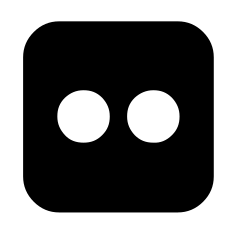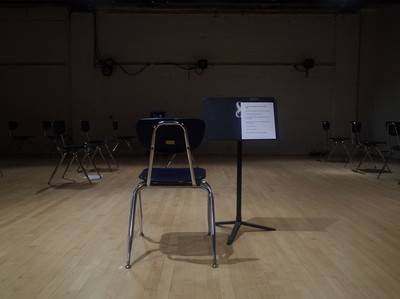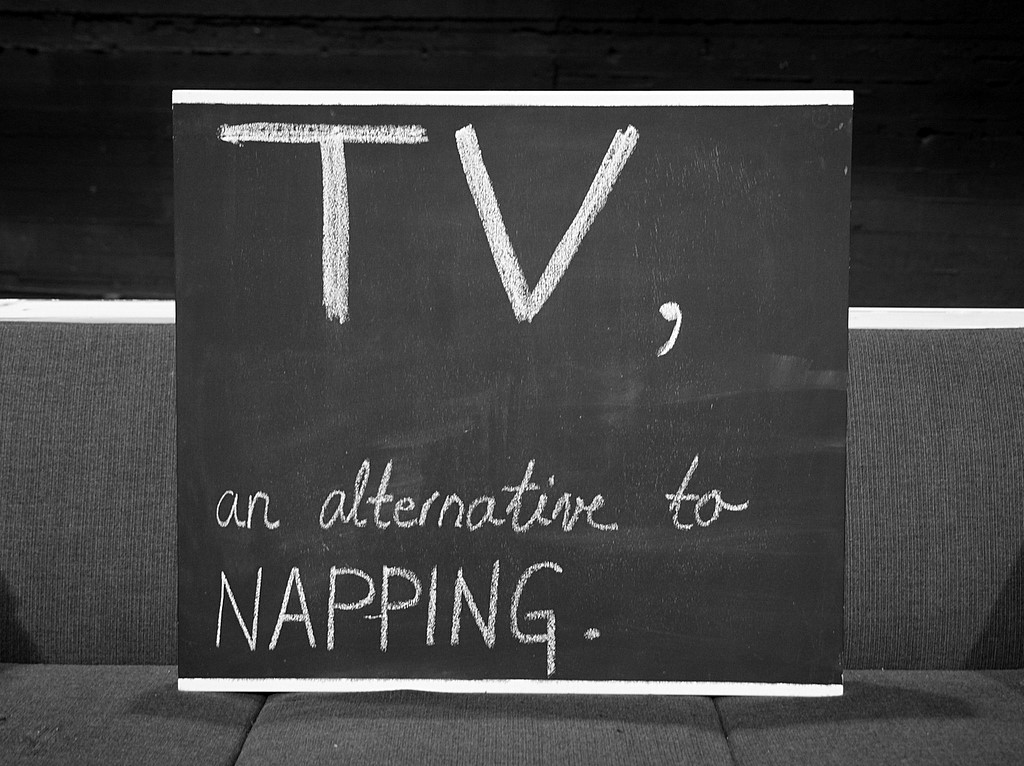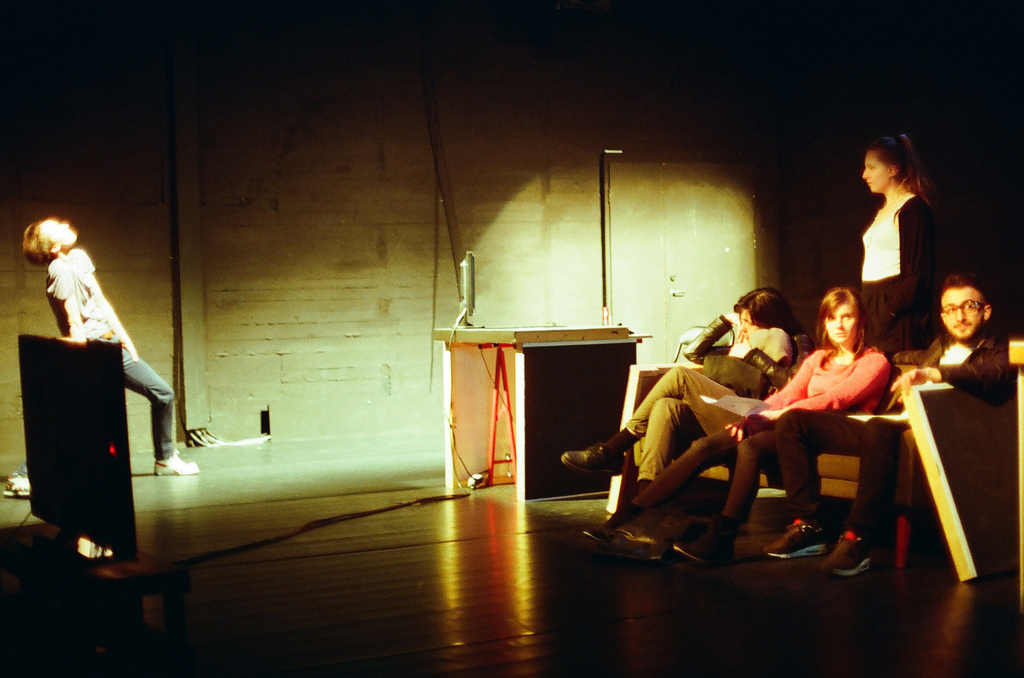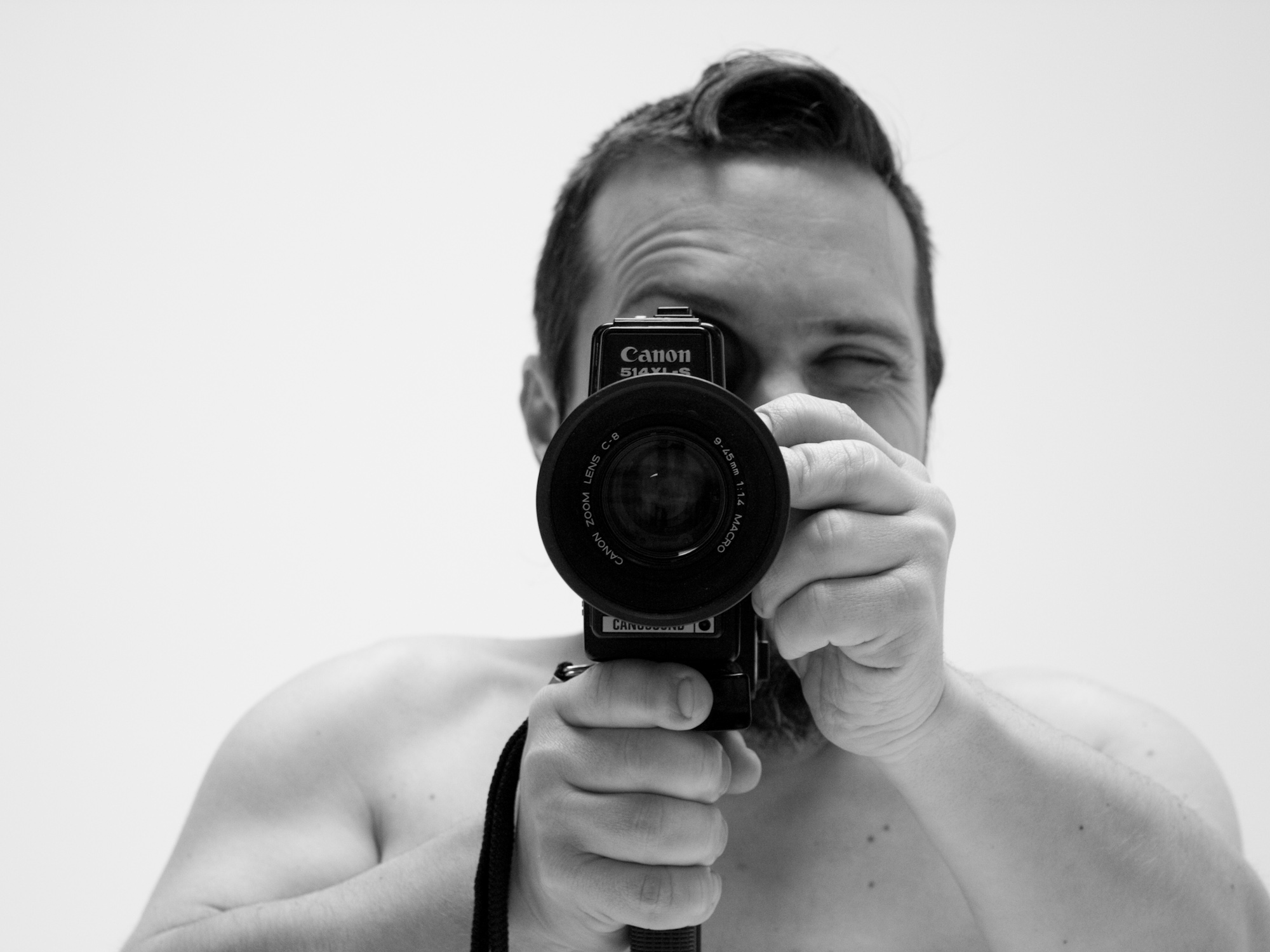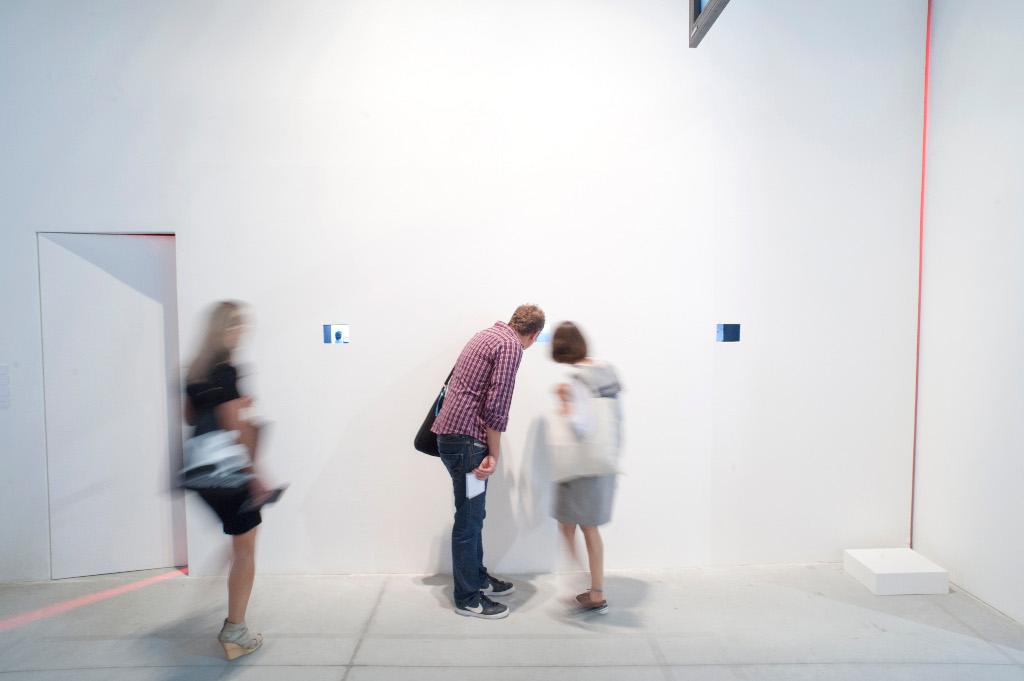"Prushevsky could have already foreseen what a work of static mechanics, in the sense of art and purposefulness, could be placed at the center of the world, but he could not perceive ahead of time the structure of soul of the residents-to-be in the all-proletarian home being built now in the midst of that plain and all the more therefore he could not imagine the inhabitants of the future tower in the midst of the universal earth. What kind of body would youth have then, and with what exciting strength would the heart begin to beat and the mind begin to think.”
Andrei Platonov The Foundation Pit
This unique project by Zagreb's theater collective BADco. - the performance-exhibition The Foundation Pit at the location of the villa at Vrhovec 38 in Zagreb, today known as the Vjenceslav Richter and Nada Kareš Richter Collection of the Museum of Contemporary Art in Zagreb - begins from research of utopian premises for the planning of the future of housing, socialization and exchange, but also the immediate interconnection of life expectancy and its realization. In the tension between imagination, labor, youth and death, BADco. and our collaborators from the fields of dance, architecture, design and music explore the contemporary role of artists in relations of production and art practices.
This performative exploration of the legacy of utopian construction of the twentieth century explores the mega-structures of Vjenceslav Richter from the late 1960s (Synthurbanism, Heliopolis), the conceptual meta-structures of American architect Lebbeus Woods, and the dystopian-satirical novel by Andrei Platonov The Foundation Pit.
Andrei Platonov was one of Russia's greatest and most intriguing writers of the twentieth century. His two most significant works, Chevengur and The Foundation Pit (written between 1926 and 1930) are an immersion into dystopic issues and depict the malformation of the utopian idea in the hands of man (who is ineffective, greedy or weak). The protagonists of The Foundation Pit are building a large tower, a proletarian home, one that will enable a communal life for all members of the working class. This home symbolizes a bright future and a utopian society, but by the end of the novel the workers fail to even pour the foundation of this building.
“But I didn't want to be born myself, I was afraid that my mother would be a bourgeois.”
Andrei Platonov The Foundation Pit
The performance-exhibition The Foundation Pit choreographically explores the specific structural principles and gravitational actuality of architectural design and the socrealistic representation of the body. Early Soviet socrealist depictions of accentuated physical strength, revolutionary fervor and the idealized future use precisely the figure of a young girl to represent the society as a whole.
The early works of Platonov often equate the adult woman with pre-revolutionary bourgeoisie - thus victory over sexual relations stands for victory over death, and desire for the female form is supplanted with desire for the future, the new, a communist society (Oxana Timofeeva). That is why the male characters of Platonov seem condemned to either a sentimental memory of the one who had walked by without stopping or the obscenity of a quivering hand in a pocket whilst watching the pioneer girls.
In the ironic turn of the end of the novel, the foundation pit of the never-completed building of a new society, the "uterus for the home of the future life", becomes the grave of the girl Nastya, the embodiment of the emptiness of the promise of future.
We enter The Foundation Pit through a performative reading room, while the whole project will be accompanied by workshops and lectures organized in cooperation with the Urban Design Platform.
Direction: Goran Sergej Pristaš
Choreography: Nikolina Pristaš
Dramaturgy: Ivana Ivković
Performance: Antonia Dorbić, Ana Kreitmeyer, Marta Krešić, Priska Pia Pristaš, Kalliopi Siganou, Evita Tsakalaki
Music and graphic design: Andro Giunio
Costumes: Silvio Vujičić
Space / Reading room: Dinko Peračić i Miranda Veljačić / Platforma 9,81
Translation: Rafaela Božić-Šejić
Technical support: Damir Prizmić i Miljenko Bengez
Production: Lovro Japundžić
Photography: Marko Ercegović
Public relations: Zrinka Šamija
Co-production: BADco. and the Museum of Contemporary Art in Zagreb
Croatian translation of Andrei Platonov's The Foundation Pit courtesy of Breza Publishing.
Lebbeus Woods quotes © Estate of Lebbeus Woods; translation into Croatian: Ivana Ivković
Thank you: Vesna Meštrić, Božo Dujmović, Leo Modrčin, Lana Pukanić, Aleksandra Wagner, Ante Pejić, Tomislav Medak, Zrinka Užbinec, net.culture club mama
Premiere: 16. November 2018 at the Vjenceslav Richter and Nada Kareš Richter Collection
The production of The Foundation Pit was supported by Zagreb City Council for Culture and the Ministry of Culture of the Republic of Croatia.
The work of BADco. is supported by the Foundation Kultura nova.
The production was prepared in Culture Center Novi Zagreb, POGON Jedinstvo – Zagreb Centre for Independent Culture and Youth and the Vjenceslav Richter and Nada Kareš Richter Collection - Museum of Contemporary Art in Zagreb.
Urban Design Platform is comprised of independent cultural organizations Art Workshop Lazareti, BADco., Drugo more, KA-MATRIX, Kontejner, Multimedia Institute, Right to the City, Platforma 9,81, and institutions Zlatna vrata Centre for Culture and Lifelong Learning, Multimedia Cultural Centre Split and the Museum of Modern and Contemporary Art in Rijeka.
